Saint-Germain-en-Laye is one of the most interesting historic towns of the Paris area. It has retained its former urban fabric inherited from the middle ages, with its pre-17th century winding streets and cul-de-sacs.
Information on the tour
2 km circuit. Level of difficulty: beginner
Duration: 1 hour 30 minutes
Tour
Route
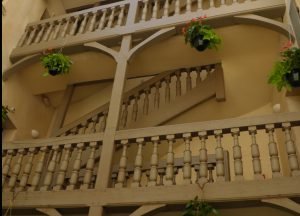 |
Starting point – Courtyard of the house where Claude Debussy was born
|
|
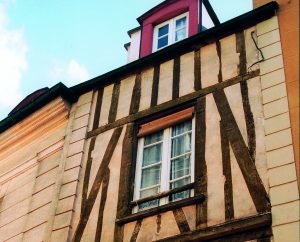 |
Stage 1 – Rue de la SalleThus named since 1640 in honour of the captains who governed the town, but also because it housed a hall (“salle”) where the residents would meet. |
|
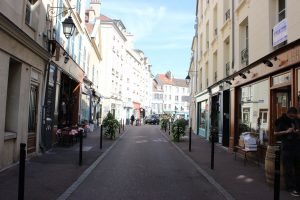 |
Stage 2 – Rue du Vieil AbreuvoirAt the street entrance there was a large watering pond but it was demolished in the 18th century to make way for the “coche”, the public vehicle that was the ancestor of the “diligence” stagecoach. |
|
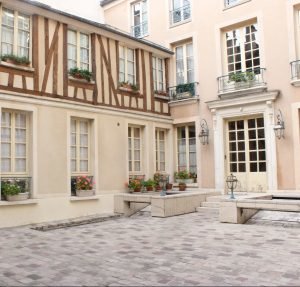 |
Stage 3 – Rue des CochesSo named since 1700 because it was the departure point of the public “coche” stagecoaches travelling to neighbouring towns, including Paris and Versailles. Stage 4 – Rue des Vieilles BoucheriesThe street was named after the meat market that was here in the Middle Ages. The street was closed by a gate at night to dissuade thieves. |
|
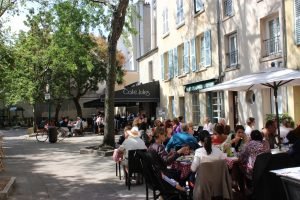 |
Stage 5 – Cour LarcherAccess to the courtyard is from Rue de Paris between nos. 40 and 42. |
|
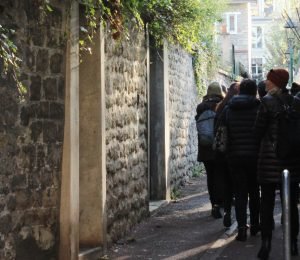 |
Stage 6 – Allée des RécolletsA narrow passageway on the site of the ancient Recollects convent. The Recollects were part of the Franciscan order and were initially protected by Henri II and Catherine de Medicis |
|
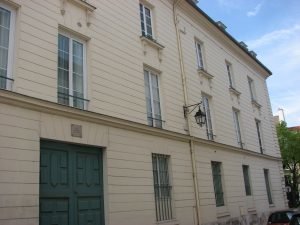 |
Stage 7 – Rue VoltaireNamed in honour of the philosopher of light who spent two months at Saint-Germain-en-Laye in 1729. |
|
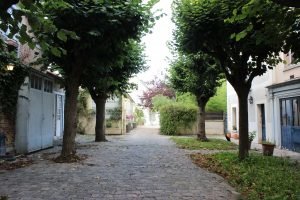 |
Stage 8 – Rue / Place Saint-Pierre– at no. 19: Hôtel de Folard, an 18th-century knight, soldier and military strategist. To the right of the door, a height marker decorated with the crown and royal cradle, indicates our altitude: 65.838 metres above the River Seine. |
|
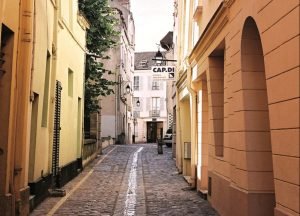 |
Stage 9 – Rue du GastIt has borne this name since 1700 in reference to a family of public figures, one of whom was a notary under Henri IV, another was a “garde manteau”, or forestry officer, under Louis XIV. |
|
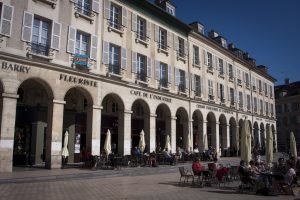 |
Stage 10 – Rue du Vieux MarchéThe markets took place in this street from the moment they were initiated by François Premier in 1526. At the end of the 18th century, it was decided to move them to what is now Place du Marché Neuf, between Rue de Pologne and Rue de Poissy. |
|
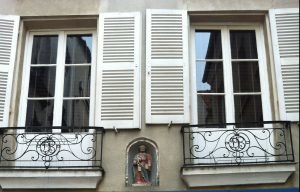 |
Stage 11 – Rue des LouviersThere are several theories as to where the term “louviers” comes from. It may be a deformation of the word “louvetier” meaning the officer serving as the Royal Wolfcatcher. Or, it may be a reference to the sheet merchants who came from the town of Louviers in Normandy. |
|
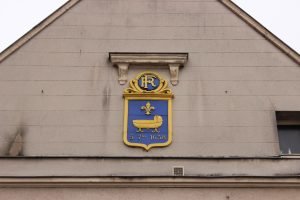 |
Stage 12 – Rue des EcuyersSo-named since 1618, probably in reference to the numerous knights who lived in Saint-Germain-en-Laye along with their horsemen (“écuyers”). Opposite the school, you can see the coat of arms of Saint-Germain-en-Laye: a crib on a blue and gold background, with a fleur-de-lys. The inscription “5 septembre 1638” recalls the birth date of Louis XIV, who was born in our town. |
|
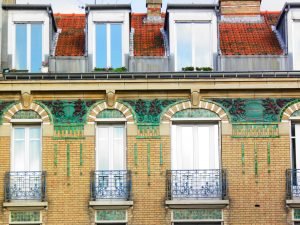 |
Stage 13 – Rue de la République– at no. 11: The chapel of the Institut Saint-Thomas-de-Villeneuve mentioned above (cf. Stage 12) features a peristyle built in 1788, with 4 Ionic columns. |
|
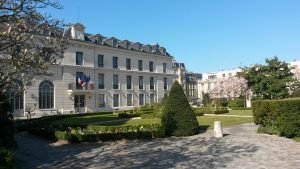 |
Stage 14 – Rue de Pontoise– at no. 16: Hôtel de Ville de Saint-Germain-en-Laye, established here in 1842 in the former Hôtel de la Rochefoucauld which dates from the 18th century. |
|
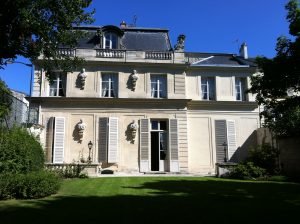 |
Stage 15 – Rue d’Alsace– at no. 11: Hôtel de Noailles. The sumptuous mansion of the three Dukes of Noailles, who were town governors until the French Revolution, was built by Jules Hardouin-Mansart. Mozart stayed here in 1778. |
|
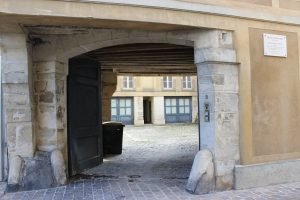 |
Stage 16 – Rue Roger de NézotNamed after Roger de Nézot, who was a town councillor of Saint-Germain-en-Laye in the days of the Prussian occupation (1870-71). |
|
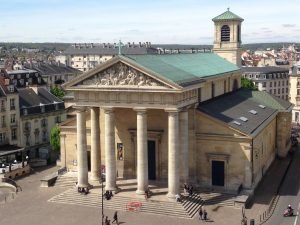 |
Stage 17 – Place Charles de GaulleYou are standing opposite: |
